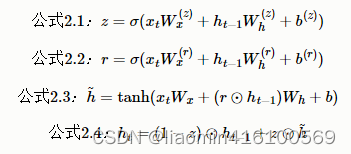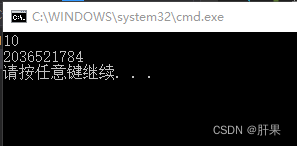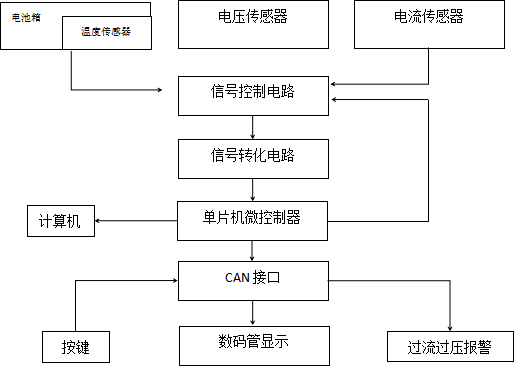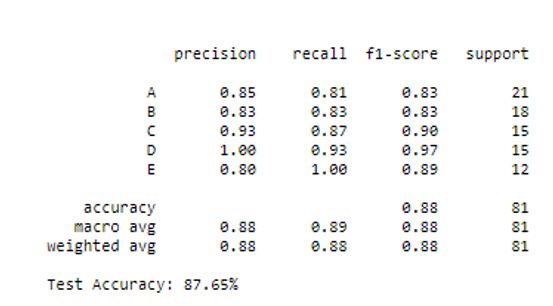文章目录
- 前提条件
- 一、常用查询
- 1. SELECT(显示查询)
- 2. DISTINCT(不重复查询)
- 3. WHERE(有条件查询)
- 4. AND/OR(且/或)
- 5. IN (显示已知值的字段)
- 6. BETWEEN(显示两个值范围内的字段)
- 7. 通配符的使用
- LIKE (匹配关键字查询)
- 8. ORDER BY (按关键字排序)
- 二、常用函数
- 1. 数学函数
- 2. 聚合函数
- 3. 字符串函数
- 三、查询与函数
- 1. GROUP BY(汇总分组)
- 2. HAVING (过滤返回值)
- 3. 别名(字段别名 表格别名)
- 4. 子查询
- 5. EXISTS(类查询)
- 四、连接查询
- 1. 表连接
- 2. CREATE VIEW(视图)
- 3. UNION(联集)
- 4. 交集
- 5. 无交集
- 五、其他用法
- 1. CASE
- 2. NULL 值
- 2.1 空值(NULL)和无值(“ ”)的区别
- 2.2 查询空值与非空值
- 3. 正则表达式
- 六、存储过程
- 1. 存储过程概念
- 2. 存储过程的优点
- 3. 存储过程相关操作
- 3.1 创建存储过程
- 3.2 调用存储过程
- 3.3 查看存储过程
- 3.4 存储过程的参数
- 3.5 删除存储过程
- 3.6 控制语句
- 条件语句
- 循环语句
- 总结
- 1. sql 语句中 HAVING 的用法
- 2. mysql数据库有几种表连接
- 3. view视图表是否能更改数据
- 4. 创建存储过程的步骤
前提条件
location表格创建
use class;
create table location (Region char(20),Store_Name char(20));
insert into location values('East','Boston');
insert into location values('East','New York');
insert into location values('West','Los Angeles');
insert into location values('West','Houston');
![[外链图片转存失败,源站可能有防盗链机制,建议将图片保存下来直接上传(img-M8A30HhZ-1687255797624)(C:\Users\86138\AppData\Roaming\Typora\typora-user-images\image-20230620140331268.png)]](https://img-blog.csdnimg.cn/29b744a89e4745b7b2c31f9e94010eb8.png#pic_center)
store_info表格创建
create table store_info (Store_Name char(20),Sales int(10),Date char(10));
insert into store_info values('Los Angeles','1500','2020-12-05');
insert into store_info values('Houston','250','2020-12-07');
insert into store_info values('Los Angeles','300','2020-12-08');
insert into store_info values('Boston','700','2020-12-08');
![[外链图片转存失败,源站可能有防盗链机制,建议将图片保存下来直接上传(img-76Uc2W4D-1687255797625)(C:\Users\86138\AppData\Roaming\Typora\typora-user-images\image-20230620140459620.png)]](https://img-blog.csdnimg.cn/402fdd144c2642ee9eacc3893a2a8ef2.png#pic_center)
一、常用查询
1. SELECT(显示查询)
显示表格中一个或数个字段的所有数据记录
SELECT "字段" FROM "表名";例如
select Store_name from store_info;
![[外链图片转存失败,源站可能有防盗链机制,建议将图片保存下来直接上传(img-swNPEhYH-1687255797625)(C:\Users\86138\AppData\Roaming\Typora\typora-user-images\image-20230620140533955.png)]](https://img-blog.csdnimg.cn/6634b8a2818a41559a1430a5d91230bd.png#pic_center)
2. DISTINCT(不重复查询)
不显示重复的数据记录
SELECT DISTINCT "字段" FROM "表名";例如
select distinct Store_Name from store_info;
![[外链图片转存失败,源站可能有防盗链机制,建议将图片保存下来直接上传(img-TB8ttezc-1687255797626)(C:\Users\86138\AppData\Roaming\Typora\typora-user-images\image-20230620140550840.png)]](https://img-blog.csdnimg.cn/4d16d464c43b4022a83791cdc1add083.png#pic_center)
3. WHERE(有条件查询)
按照条件进行查询
SELECT "字段" FROM "表名" WHERE "条件";例如
select distinct Store_Name from store_info where Sales > 1000;
![[外链图片转存失败,源站可能有防盗链机制,建议将图片保存下来直接上传(img-MDvqQTZW-1687255797626)(C:\Users\86138\AppData\Roaming\Typora\typora-user-images\image-20230620141321876.png)]](https://img-blog.csdnimg.cn/8bf8e25d43e54f7e9248fb401c9e8b6c.png#pic_center)
4. AND/OR(且/或)
SELECT "字段" FROM "表名" WHERE "条件1" {[AND|OR] "条件2"} + ;例如
select Store_Name from store_info where Sales > 1000 OR ( Sales < 500 and Sales > 200 );
![[外链图片转存失败,源站可能有防盗链机制,建议将图片保存下来直接上传(img-61Kt25MA-1687255797627)(C:\Users\86138\AppData\Roaming\Typora\typora-user-images\image-20230620141404552.png)]](https://img-blog.csdnimg.cn/b9ea8b250e1941028308ef36a139da24.png#pic_center)
5. IN (显示已知值的字段)
在已知的字段数据取值范围内取值
SELECT "字段" FROM "表名" WHERE "字段" IN ('值1', '值2', ...);例如
select * from store_info where Store_Name in ('Los Angeles', 'Houston');
![[外链图片转存失败,源站可能有防盗链机制,建议将图片保存下来直接上传(img-2JnfgOtj-1687255797627)(C:\Users\86138\AppData\Roaming\Typora\typora-user-images\image-20230620141429181.png)]](https://img-blog.csdnimg.cn/1080613594564477b9cf5b2c4ffbce9c.png#pic_center)
另外还有not in命令,用法一致,表示显示不在指定范围内的字段的值。
6. BETWEEN(显示两个值范围内的字段)
在两个字段数据值之间取值,包含两边字段的数据
SELECT "字段" FROM "表名" WHERE "字段" BETWEEN '值1' AND '值2';例如
select * from store_info where Date between '2020-12-06' and '2020-12-10';
![[外链图片转存失败,源站可能有防盗链机制,建议将图片保存下来直接上传(img-iOdqgdiw-1687255797628)(C:\Users\86138\AppData\Roaming\Typora\typora-user-images\image-20230620141538394.png)]](https://img-blog.csdnimg.cn/b4770cf0a44f4cbf8ac48393cd4f38dc.png#pic_center)
7. 通配符的使用
通常通配符都是与like配合使用的
% :百分号表示零个、一个或多个字符
_ :下划线表示单个字符
'A_Z':所有以 'A' 起头,另一个任何值的字符,且以 'Z' 为结尾的字符串。例如,'ABZ' 和 'A2Z' 都符合这一个模式,而 'AKKZ' 并不符合 (因为在 A 和 Z 之间有两个字符,而不是一个字符)。
'ABC%': 所有以 'ABC' 起头的字符串。例如,'ABCD' 和 'ABCABC' 都符合这个模式。
'%XYZ': 所有以 'XYZ' 结尾的字符串。例如,'WXYZ' 和 'ZZXYZ' 都符合这个模式。
'%AN%': 所有含有 'AN'这个模式的字符串。例如,'LOS ANGELES' 和 'SAN FRANCISCO' 都符合这个模式。
'_AN%':所有第二个字母为 'A' 和第三个字母为 'N' 的字符串。例如,'SAN FRANCISCO' 符合这个模式,而 'LOS ANGELES' 则不符合这个模式。
LIKE (匹配关键字查询)
SELECT "字段" FROM "表名" WHERE "字段" LIKE {模式};例如
select * from store_info where Store_Name like '%os%';
![[外链图片转存失败,源站可能有防盗链机制,建议将图片保存下来直接上传(img-nqItwmTs-1687255797628)(C:\Users\86138\AppData\Roaming\Typora\typora-user-images\image-20230620141620857.png)]](https://img-blog.csdnimg.cn/fe241bb4536a4e5598c31ae0605ccd3d.png#pic_center)
8. ORDER BY (按关键字排序)
SELECT "字段" FROM "表名" [WHERE “条件”] ORDER BY "字段" [ASC, DESC];
#ASC 是按照升序进行排序的,是默认的排序方式。
#DESC 是按降序方式进行排序。例如
select Store_Name,Sales,Date from store_info order by Sales DESC;
![[外链图片转存失败,源站可能有防盗链机制,建议将图片保存下来直接上传(img-AnAOrwut-1687255797628)(C:\Users\86138\AppData\Roaming\Typora\typora-user-images\image-20230620141645511.png)]](https://img-blog.csdnimg.cn/e90ec8bbb00041559c9f4bfd78b51da9.png#pic_center)
二、常用函数
1. 数学函数
| 关键字 | 含义 |
|---|---|
abs(x) | 返回 x 的绝对值 |
rand() | 返回 0 到 1 的随机数 |
mod(x,y) | 返回 x 除以 y 以后的余数 |
power(x,y) | 返回 x 的 y 次方 |
round(x) | 返回离 x 最近的整数 |
round(x,y) | 保留 x 的 y 位小数四舍五入后的值 |
sqrt(x) | 返回 x 的平方根 |
truncate(x,y) | 返回数字 x 截断为 y 位小数的值 |
ceil(x) | 返回大于或等于 x 的最小整数 |
floor(x) | 返回小于或等于 x 的最大整数 |
greatest(x1,x2...) | 返回集合中最大的值,也可以返回多个字段的最大的值 |
least(x1,x2…) | 返回集合中最小的值,也可以返回多个字段的最小的值 |
select abs(-1), rand(), mod(5,3), power(2,3), round(1.89);
![[外链图片转存失败,源站可能有防盗链机制,建议将图片保存下来直接上传(img-6cesclfZ-1687255797629)(C:\Users\86138\AppData\Roaming\Typora\typora-user-images\image-20230620141747900.png)]](https://img-blog.csdnimg.cn/d4138f2fa1134ed69e3b42b4179b7ab0.png#pic_center)
select round(1.8937,3), truncate(1.235,2), ceil(5.2), floor(2.1), least(1.89,3,6.1,2.1);
![[外链图片转存失败,源站可能有防盗链机制,建议将图片保存下来直接上传(img-V04tfNVS-1687255797629)(C:\Users\86138\AppData\Roaming\Typora\typora-user-images\image-20230620141808995.png)]](https://img-blog.csdnimg.cn/01c1cff42d6a43f8984d2aa24ec27bfb.png#pic_center)
#求一组数据最大值
create table t1 (id1 int, id2 int, id3 int, id4 int);
insert into t1 values (10, 50, 30, 20);
select * from t1;
select greatest(id1,id2,id3,id4) from t1;
![[外链图片转存失败,源站可能有防盗链机制,建议将图片保存下来直接上传(img-9m8oGZmf-1687255797630)(C:\Users\86138\AppData\Roaming\Typora\typora-user-images\image-20230620142853498.png)]](https://img-blog.csdnimg.cn/a6ca65f379884c7592404a1e94eb1633.png#pic_center)
#求1000以内的随机整数
select round(rand() * 1000);
select truncate(rand() * 1000,0);
![[外链图片转存失败,源站可能有防盗链机制,建议将图片保存下来直接上传(img-dcxEJv40-1687255797630)(C:\Users\86138\AppData\Roaming\Typora\typora-user-images\image-20230620142922318.png)]](https://img-blog.csdnimg.cn/88a5785d22ce486e830318300b9f24f8.png#pic_center)
2. 聚合函数
| 关键字 | 含义 |
|---|---|
avg() | 返回指定列的平均值 |
count() | 返回指定列中非 NULL 值的个数 |
min() | 返回指定列的最小值 |
max() | 返回指定列的最大值 |
sum(x) | 返回指定列的所有值之和 |
#求平均值
select avg(Sales) from store_info;
![[外链图片转存失败,源站可能有防盗链机制,建议将图片保存下来直接上传(img-aft7VI8S-1687255797630)(C:\Users\86138\AppData\Roaming\Typora\typora-user-images\image-20230620142952378.png)]](https://img-blog.csdnimg.cn/d88c9847e69d408ca869c7f93ada16d0.png#pic_center)
#求表中城市数量
select count(Store_Name) from store_info where Store_Name is NOT NULL;
![[外链图片转存失败,源站可能有防盗链机制,建议将图片保存下来直接上传(img-uV07qn1a-1687255797631)(C:\Users\86138\AppData\Roaming\Typora\typora-user-images\image-20230620143001063.png)]](https://img-blog.csdnimg.cn/c664d1ce247149a0bfbfdc87105fbe43.png#pic_center)
#统计数量,进行去重
select count(DISTINCT Store_Name) from store_info;
![[外链图片转存失败,源站可能有防盗链机制,建议将图片保存下来直接上传(img-uQFEyunh-1687255797631)(C:\Users\86138\AppData\Roaming\Typora\typora-user-images\image-20230620143007782.png)]](https://img-blog.csdnimg.cn/3c46fefb94574d9f8594f7aaa9d65840.png#pic_center)
#统计字段中最大值
select max(Sales) from store_info;
![[外链图片转存失败,源站可能有防盗链机制,建议将图片保存下来直接上传(img-ooZPNcCv-1687255797631)(C:\Users\86138\AppData\Roaming\Typora\typora-user-images\image-20230620143050512.png)]](https://img-blog.csdnimg.cn/5a93ad9a32b740879ea38ba361581ad7.png#pic_center)
#统计字段中最小值
select min(Sales) from store_info;
![[外链图片转存失败,源站可能有防盗链机制,建议将图片保存下来直接上传(img-enURmoPY-1687255797631)(C:\Users\86138\AppData\Roaming\Typora\typora-user-images\image-20230620143058997.png)]](https://img-blog.csdnimg.cn/4cda6a1602bc40a49641be58483c6240.png#pic_center)
#统计字段中的总和
select sum(Sales) from store_info;
![[外链图片转存失败,源站可能有防盗链机制,建议将图片保存下来直接上传(img-Q5rRmw9P-1687255797632)(C:\Users\86138\AppData\Roaming\Typora\typora-user-images\image-20230620143104492.png)]](https://img-blog.csdnimg.cn/a0b83447f04f42c5a3290b1ced4d138f.png#pic_center)
3. 字符串函数
| 关键字 | 含义 |
|---|---|
trim() | 返回去除指定格式的值 |
concat(x,y) | 将提供的参数 x 和 y 拼接成一个字符串 |
substr(x,y) | 获取从字符串 x 中的第 y 个位置开始的字符串,跟substring()函数作用相同 |
substr(x,y,z) | 获取从字符串 x 中的第 y 个位置开始长度为 z 的字符串 |
length(x) | 返回字符串 x 的长度 |
replace(x,y,z) | 将字符串 z 替代字符串 x 中的字符串 y |
upper(x) | 将字符串 x 的所有字母变成大写字母 |
lower(x) | 将字符串 x 的所有字母变成小写字母 |
left(x,y) | 返回字符串 x 的前 y 个字符 |
right(x,y) | 返回字符串 x 的后 y 个字符 |
repeat(x,y) | 将字符串 x 重复 y 次 |
space(x) | 返回 x 个空格 |
strcmp(x,y) | 比较 x 和 y,返回的值可以为-1,0,1 |
reverse(x) | 将字符串 x 反转 |
#输出指定一个字段中某一部分
#命令行
i='123456789'
echo ${i:3:4}
![[外链图片转存失败,源站可能有防盗链机制,建议将图片保存下来直接上传(img-jLr7i60P-1687255797632)(C:\Users\86138\AppData\Roaming\Typora\typora-user-images\image-20230620145401175.png)]](https://img-blog.csdnimg.cn/d06f0dc49fc94fc59da36359568f5d79.png#pic_center)
#字段替换
#命令行操作
i='123456789'
echo $i | tr '456' 'abc'
![[外链图片转存失败,源站可能有防盗链机制,建议将图片保存下来直接上传(img-6lMes6ye-1687255797632)(C:\Users\86138\AppData\Roaming\Typora\typora-user-images\image-20230620145306764.png)]](https://img-blog.csdnimg.cn/365c375944944dc683dd38ca26022bfa.png#pic_center)
#大小写字母替换
#命令行操作
echo abc123xyz | tr 'a-z' 'A-Z'
![[外链图片转存失败,源站可能有防盗链机制,建议将图片保存下来直接上传(img-EfDv9jRu-1687255797633)(C:\Users\86138\AppData\Roaming\Typora\typora-user-images\image-20230620145349286.png)]](https://img-blog.csdnimg.cn/670ea0226064475ebf7271bdd4b5ac2e.png#pic_center)
#字段拼接
select concat(Region, Store_Name) from location where Store_Name = 'Boston';
![[外链图片转存失败,源站可能有防盗链机制,建议将图片保存下来直接上传(img-n4yj5WC3-1687255797633)(C:\Users\86138\AppData\Roaming\Typora\typora-user-images\image-20230620143346203.png)]](https://img-blog.csdnimg.cn/87e24150fe694206b48de7c82b75f52e.png#pic_center)
#如sql_mode开启开启了PIPES_AS_CONCAT,"||"视为字符串的连接操作符而非或运算符,
#和字符串的拼接函数Concat相类似,这和Oracle数据库使用方法一样的
select Region || ' ' || Store_Name from location where Store_Name = 'Boston';
![[外链图片转存失败,源站可能有防盗链机制,建议将图片保存下来直接上传(img-izpkQijY-1687255797634)(C:\Users\86138\AppData\Roaming\Typora\typora-user-images\image-20230620143450953.png)]](https://img-blog.csdnimg.cn/74b762ad7387430a99c9c4810130085b.png#pic_center)
select substr(Store_Name,5) from location where Store_Name = 'Los Angeles';
select substr(Store_Name,3,4) from location where Store_Name = 'New York';
![[外链图片转存失败,源站可能有防盗链机制,建议将图片保存下来直接上传(img-CMzpF4bD-1687255797634)(C:\Users\86138\AppData\Roaming\Typora\typora-user-images\image-20230620143659443.png)]](https://img-blog.csdnimg.cn/130d559285cd4c31bc0ff7c369f44391.png#pic_center)
SELECT TRIM ([ [位置] [要移除的字符串] FROM ] 字符串);
#[位置]:的值可以为 LEADING (起头), TRAILING (结尾), BOTH (起头及结尾)。
#[要移除的字符串]:从字串的起头、结尾,或起头及结尾移除的字符串。缺省时为空格。例如
select trim(leading 'New ' from 'New York');
select trim(leading 'Los' from (select store_name from location where store_name = 'Los Angeles'));
![[外链图片转存失败,源站可能有防盗链机制,建议将图片保存下来直接上传(img-9xevhfWr-1687255797634)(C:\Users\86138\AppData\Roaming\Typora\typora-user-images\image-20230620144436274.png)]](https://img-blog.csdnimg.cn/b8c0ab047e5f4103abc75b1ec27b8535.png#pic_center)
select replace(Region, 'ast', 'astern')from location;
![[外链图片转存失败,源站可能有防盗链机制,建议将图片保存下来直接上传(img-cHBnmPll-1687255797635)(C:\Users\86138\AppData\Roaming\Typora\typora-user-images\image-20230620143841232.png)]](https://img-blog.csdnimg.cn/02c74584687740c9a2fe4f398eca7277.png#pic_center)
三、查询与函数
1. GROUP BY(汇总分组)
对GROUP BY后面的栏位的查询结果进行汇总分组,通常是结合聚合函数一起使用的。
GROUP BY有一个原则,就是 SELECT 后面的所有列中,没有使用聚合函数的列,必须出现在GROUP BY后面。
SELECT "字段1", SUM("字段2") FROM "表名" GROUP BY "字段1";例如
#对分组的总和进行降序排序
select Store_Name,sum(Sales) from store_info group by Store_Name order by sales desc;
![[外链图片转存失败,源站可能有防盗链机制,建议将图片保存下来直接上传(img-QgzP10x4-1687255797635)(C:\Users\86138\AppData\Roaming\Typora\typora-user-images\image-20230620144452549.png)]](https://img-blog.csdnimg.cn/d2c613673c754373b42a6adab49e6bc6.png#pic_center)
2. HAVING (过滤返回值)
用来过滤由 GROUP BY 语句返回的记录集,通常与 GROUP BY 语句联合使用。
HAVING 语句的存在弥补了 WHERE 关键字不能与聚合函数联合使用的不足。
SELECT "字段1", SUM("字段2") FROM "表格名" GROUP BY "字段1" HAVING (函数条件);例如
select Store_Name, SUM(Sales) from store_info group by Store_Name having SUM(Sales) > 1500;
![[外链图片转存失败,源站可能有防盗链机制,建议将图片保存下来直接上传(img-laBozDPj-1687255797636)(C:\Users\86138\AppData\Roaming\Typora\typora-user-images\image-20230620144613694.png)]](https://img-blog.csdnimg.cn/4e297ebbee7c47cc814fb9e3ada32910.png#pic_center)
3. 别名(字段别名 表格别名)
SELECT "表格別名"."字段1" [AS] "字段別名" FROM "表格名" [AS] "表格別名";例如
select A.Store_Name Store, SUM(A.Sales) "Total Sales" from store_info A group by A.Store_Name;
select Store_Name,sum(Sales) as "Total Sales" from store_info group by Store_Name;
![[外链图片转存失败,源站可能有防盗链机制,建议将图片保存下来直接上传(img-yQefuTDH-1687255797636)(C:\Users\86138\AppData\Roaming\Typora\typora-user-images\image-20230620144639200.png)]](https://img-blog.csdnimg.cn/cac6031836744d20a41bf13ed37f18cf.png#pic_center)
4. 子查询
连接表格,在WHERE 子句或 HAVING 子句中插入另一个 SQL 语句
SELECT "字段1" FROM "表格1" WHERE "字段2" [比较运算符] #外查询
(SELECT "字段1" FROM "表格2" WHERE "条件"); #内查询
#内查询优先级高于外查询#可以是符号的运算符,例如 =、>、<、>=、<= ;也可以是文字的运算符,例如 LIKE、IN、BETWEEN
例如
#查询两个表交集的城市
select * from location where store_name in (select store_name from store_info);#查询在location表中西部城市的销售总和
select sum(sales) from store_info where store_name in (select store_name from location where region = 'West');#通过多表查询,查询两个表中有交集的值
select sum(A.Sales) from store_info A where A.Store_Name in (select Store_Name from location B where B.Store_Name = A.Store_Name);
![[外链图片转存失败,源站可能有防盗链机制,建议将图片保存下来直接上传(img-Cp4Sh4fA-1687255797636)(C:\Users\86138\AppData\Roaming\Typora\typora-user-images\image-20230620144740036.png)]](https://img-blog.csdnimg.cn/10637f52f5ed495d8560aafcd3f3f507.png#pic_center)
5. EXISTS(类查询)
用来测试内查询有没有产生任何结果,类似布尔值是否为真。
如果有的话,系统就会执行外查询中的SQL语句。若是没有的话,那整个 SQL 语句就不会产生任何结果。
SELECT "字段1" FROM "表格1" WHERE EXISTS (SELECT * FROM "表格2" WHERE "条件");
例如
#判断是否有西部城市,有的话就计算销售和
,如果没有就输出NULL
select SUM(Sales) from store_info where exists (select * from location where Region = 'West');
![[外链图片转存失败,源站可能有防盗链机制,建议将图片保存下来直接上传(img-uIGixYUA-1687255797637)(C:\Users\86138\AppData\Roaming\Typora\typora-user-images\image-20230620144806324.png)]](https://img-blog.csdnimg.cn/f22da998d73f472d93af41fd37f10340.png#pic_center)
四、连接查询
1. 表连接
| 表连接方式 | 含义 |
|---|---|
inner join(内连接) | 只返回两个表中联结字段相等的行 |
left join(左连接) | 返回包括左表中的所有记录和右表中联结字段相等的记录,不相等的行则返回null |
right join(右连接) | 返回包括右表中的所有记录和左表中联结字段相等的记录,不相等的行则返回null |
#内连接
select * from location A inner join store_info B on A.Store_Name = B.Store_Name ;
select * from location A inner join store_info B using(Store_Name);
#其中using需要在两张表有同名情况下使用
![[外链图片转存失败,源站可能有防盗链机制,建议将图片保存下来直接上传(img-zKKJnPxs-1687331282224)(C:\Users\86138\AppData\Roaming\Typora\typora-user-images\image-20230621133924390.png)]](https://img-blog.csdnimg.cn/4ff8dfc4ff47443085d2bd754b56fdaf.png#pic_center)
#右连接
select * from location A RIGHT JOIN store_info B on A.Store_Name = B.Store_Name ;
![[外链图片转存失败,源站可能有防盗链机制,建议将图片保存下来直接上传(img-LYfo78zw-1687331282225)(C:\Users\86138\AppData\Roaming\Typora\typora-user-images\image-20230621134002192.png)]](https://img-blog.csdnimg.cn/71369859f17e494da8836517fc064340.png#pic_center)
#多表查询
select * from location A, store_info B where A.store_name = B.store_name;
#效率略低于inner用法
![[外链图片转存失败,源站可能有防盗链机制,建议将图片保存下来直接上传(img-cn4Os6N0-1687331282226)(C:\Users\86138\AppData\Roaming\Typora\typora-user-images\image-20230621134040344.png)]](https://img-blog.csdnimg.cn/9ce6320fef3f4835bcf40a70478564d2.png#pic_center)
#对分表查询进行分组、排序
select region,sum(B.sales) from location A, store_info B where A.store_name = B.store_name group by region order by sum(B.sales) desc;
![[外链图片转存失败,源站可能有防盗链机制,建议将图片保存下来直接上传(img-V4hXgEOJ-1687331282227)(C:\Users\86138\AppData\Roaming\Typora\typora-user-images\image-20230621134133908.png)]](https://img-blog.csdnimg.cn/b24166a620394a8eba6d8e25cb5b4659.png#pic_center)
2. CREATE VIEW(视图)
视图跟表格的不同是,表格中有实际储存数据记录,而视图是建立在表格之上的一个架构,它本身并不实际储存数据记录。临时表在用户退出或同数据库的连接断开后就自动消失了,而视图不会消失。
视图不含有数据,只存储它的定义,它的用途一般可以简化复杂的查询。比如你要对几个表进行连接查询,而且还耍进行统计排疗等操作,写sql语句会很麻烦的,用视图将几个表联结起来,然后对这个视图进行查询操作,就和对一个表查询一样,很方便。
CREATE VIEW "视图表名" AS "SELECT 语句";例如
CREATE VIEW V_REGION_SALES AS SELECT A.Region REGION,SUM(B.Sales) SALES FROM location A INNER JOIN store_info B ON A.Store_Name = B.Store_Name GROUP BY REGION;SELECT * FROM V_REGION_SALES;
DROP VIEW V_REGION_SALES;

3. UNION(联集)
将两个sql语句的结果合并起来,两个sql语句所产生的字段需要是同样的数据记录种类。
#union生成结果的数据记录值将没有重复,且按照字段的顺序进行排序
[SELECT 语句 1] UNION [SELECT 语句 2];例如
select Store_Name from location union select Store_Name from store_info;

#union all:将生成结果的数据记录值都列出来,无论有无重复
语法:[SELECT 语句 1] UNION ALL [SELECT 语句 2];例如
select Store_Name from location union all select Store_Name from store_info;
![[外链图片转存失败,源站可能有防盗链机制,建议将图片保存下来直接上传(img-XVWBVThb-1687331282229)(C:\Users\86138\AppData\Roaming\Typora\typora-user-images\image-20230621134536306.png)]](https://img-blog.csdnimg.cn/b5ecf6a9529c4cbdacbe53469a7979c2.png#pic_center)
4. 交集
取两个SQL语句结果的交集
#内连接
select [distinct] A.字段 from 左表 A inner join 右表 B on A.字段 = B.字段;
select A.字段 from 左表 A inner join 右表 B using(同名字段);例如
SELECT A.Store_Name FROM location A INNER JOIN store_info B ON A.Store_Name = B.Store_Name;
SELECT A.Store_Name FROM location A INNER JOIN store_info B USING(Store_Name);
![[外链图片转存失败,源站可能有防盗链机制,建议将图片保存下来直接上传(img-lW4Q4EbQ-1687331282229)(C:\Users\86138\AppData\Roaming\Typora\typora-user-images\image-20230621134736502.png)]](https://img-blog.csdnimg.cn/f62856cf31704e3aa1dc160e7ac9f680.png#pic_center)
#左连接
select B.字段 from 左表 A left join 右表 B on A字段 = B.字段 where B.字段 is not null;
#右连接
select A.字段 from 左表 A right join 右表 B on A.字段 = B.字段 where A字段 is not null;例如
select B.store_name from location A left join store_info B on A.store_name = B.store_name where B.store_name is not null;
select A.store_name from location A right join store_info B on A.store_name = B.store_name where A.store_name is not null;
![[外链图片转存失败,源站可能有防盗链机制,建议将图片保存下来直接上传(img-wGvoDKuP-1687331282229)(C:\Users\86138\AppData\Roaming\Typora\typora-user-images\image-20230621140733195.png)]](https://img-blog.csdnimg.cn/046bb5108f4945edb0478b82048dcb37.png#pic_center)
#查询两表相同字段
select A.字段 from 左表 A,右表 B where A.字段 = B.字段;例如
select B.store_name from location A, store_info B where A.store_name = B.store_name;
select A.store_name from location A, store_info B where A.store_name = B.store_name;
![[外链图片转存失败,源站可能有防盗链机制,建议将图片保存下来直接上传(img-cfYqqLRh-1687331282230)(C:\Users\86138\AppData\Roaming\Typora\typora-user-images\image-20230621140913526.png)]](https://img-blog.csdnimg.cn/56ada0a165f2427ba9abb362fb7683fd.png#pic_center)
#子查询
select 字段 from 左表 where 字段 in (select 字段 from 右表);例如
select store_name from location where store_name in (select store_name from store_info);
![[外链图片转存失败,源站可能有防盗链机制,建议将图片保存下来直接上传(img-8KSlyqNp-1687331282230)(C:\Users\86138\AppData\Roaming\Typora\typora-user-images\image-20230621141056847.png)]](https://img-blog.csdnimg.cn/46879b2c53b141809a8a7137978bb9e8.png#pic_center)
#去重查询
select distinct B.store_name from location A inner join store_info B using(store_name);
select B.store_name from location A inner join store_info B using(store_name) group by store_name;
![[外链图片转存失败,源站可能有防盗链机制,建议将图片保存下来直接上传(img-1AkybI2B-1687331282230)(C:\Users\86138\AppData\Roaming\Typora\typora-user-images\image-20230621141402455.png)]](https://img-blog.csdnimg.cn/7c829874a0684f29ad85e0dcdc0de9ed.png#pic_center)
5. 无交集
显示第一个SQL语句的结果,且与第二个SQL语句没有交集的结果,且没有重复
#单表无交集查询
#子查询
select distinct store_Name from location where (store_name) not in (select Store_Name from store_info);
![[外链图片转存失败,源站可能有防盗链机制,建议将图片保存下来直接上传(img-65MtnFor-1687331282231)(C:\Users\86138\AppData\Roaming\Typora\typora-user-images\image-20230621141534303.png)]](https://img-blog.csdnimg.cn/12ce8a978f0d49d0801aea19f5a75bda.png#pic_center)
#单表无交集查询
#右连接
select B.store_name from location A right join store_info B on A.store_name = B.store_name where A.store_name is null;#左连接
select A.store_name from location A left join store_info B on A.store_name = B.store_name where ere B.store_name is null;
![[外链图片转存失败,源站可能有防盗链机制,建议将图片保存下来直接上传(img-efW8HdBY-1687331282231)(C:\Users\86138\AppData\Roaming\Typora\typora-user-images\image-20230621141857586.png)]](https://img-blog.csdnimg.cn/82d8a142475840dab66bf0cb725a3e36.png#pic_center)
#多表无交集查询
#视图方式
create view V XXX as select 字段 from 左表 union all select 字段 from 右表;
select 字段 from V_XXX qroup by 字段 having count(字段) = 1;例如
create view V_union as select store_name from location union all select store_name from store_info;
select * from V_union;
select store_name from V_union group by store_name having count(store_name) = 1;
![[外链图片转存失败,源站可能有防盗链机制,建议将图片保存下来直接上传(img-7AK5u548-1687331282232)(C:\Users\86138\AppData\Roaming\Typora\typora-user-images\image-20230621142020945.png)]](https://img-blog.csdnimg.cn/c01856603912442e889fb85f32c57b74.png#pic_center)
#多表无交集查询
#派生表:将select语句作为一张表来处理例如
select A.store_name from (select distinct store_name from location union all select distinct store_name from store_info) A group by A.store_name having count(A.store_name) = 1;
![[外链图片转存失败,源站可能有防盗链机制,建议将图片保存下来直接上传(img-MKKAlwDw-1687331282232)(C:\Users\86138\AppData\Roaming\Typora\typora-user-images\image-20230621142117213.png)]](https://img-blog.csdnimg.cn/1088d5164a664edf9b88631c34aa4fe0.png#pic_center)
#多表无交集查询
#若查询之前其中一个表中有重复值,需要在建视图之前进行查重
create view V_union as select distinct store_name from location union all select distinct store_name from store_info;
select * from V_union;
select store_name from V_union group by store_name having count(store_name) = 1;

五、其他用法
1. CASE
case 是 sql 语句用来 IF-THEN-ELSE 之类逻辑的关键字
SELECT CASE ("字段名")WHEN "条件1" THEN "结果1"WHEN "条件2" THEN "结果2"...[ELSE "结果N"]END
FROM "表名";# "条件" 可以是一个数值或是公式。 ELSE 子句则并不是必须的。例如
mysql> select Store_Name, case store_name-> when 'Los Angeles' then sales * 2-> when 'Boston' then 2000-> else sales-> end-> 'New Sales',Date-> from store_info;
#then可以对查询结果进行指定数值

2. NULL 值
2.1 空值(NULL)和无值(“ ”)的区别
无值的长度为 0,不占用空间的;而 NULL 值的长度是 NULL,是占用空间的。
IS NULL 或者 IS NOT NULL,是用来判断字段是不是为 NULL 或者不是 NULL,不能查出是不是无值的。
无值的判断使用=''或者<>''来处理。<> 代表不等于。
在通过 count()指定字段统计有多少行数时,如果遇到 NULL 值会自动忽略掉,遇到无值会加入到记录中进行计算。
2.2 查询空值与非空值
#计算长度
select length(null), length('1234'), length('1'), length('');
![[外链图片转存失败,源站可能有防盗链机制,建议将图片保存下来直接上传(img-qmQI2rj3-1687331282233)(C:\Users\86138\AppData\Roaming\Typora\typora-user-images\image-20230621142906730.png)]](https://img-blog.csdnimg.cn/d73f9e7151da45afa1f2537e64042e86.png#pic_center)
#指定字段去统计
select count(name) from t2;
select count(*) from t2;
![[外链图片转存失败,源站可能有防盗链机制,建议将图片保存下来直接上传(img-U20HtWDi-1687331282234)(C:\Users\86138\AppData\Roaming\Typora\typora-user-images\image-20230621150503892.png)]](https://img-blog.csdnimg.cn/669fdb892d6a40a499955277241836b1.png#pic_center)
3. 正则表达式
| 匹配模式 | 描述 | 实例 |
|---|---|---|
^ | 匹配文本的开始字符 | ^bd 匹配以 bd 开头的字符串 |
$ | 匹配文本的结束字符 | qn$ 匹配以 qn 结尾的字符串 |
. | 匹配任何单个字符 | s.t 匹配任何 s 和 t 之间有一个字符的字符串 |
* | 匹配零个或多个在它前面的字符 | fo*t 匹配 t 前面有任意个 o |
+ | 匹配前面的字符 1 次或多次 | hom+匹配以 ho 开头,后面至少一个m 的字符串 |
字符串 | 匹配包含指定的字符串 | clo 匹配含有 clo 的字符串 |
| `p1 | p2` | 匹配 p1 或 p2 |
[...] | 匹配字符集合中的任意一个字符 | [abc] 匹配 a 或者 b 或者 c |
[^...] | 匹配不在括号中的任何字符 | [^ab] 匹配不包含 a 或者 b 的字符串 |
{n} | 匹配前面的字符串 n 次 | g{2} 匹配含有 2 个 g 的字符串 |
{n,m} | 匹配前面的字符串至少 n 次,至多m 次 | f{1,3} 匹配 f 最少 1 次,最多 3 次 |
SELECT "字段" FROM "表名" WHERE "字段" REGEXP {模式};例如
SELECT * FROM store_info WHERE Store_Name REGEXP 'os';
SELECT * FROM store_info WHERE Store_Name REGEXP '^[A-G]';
SELECT * FROM store_info WHERE Store_Name REGEXP 'Ho|Bo';
![[外链图片转存失败,源站可能有防盗链机制,建议将图片保存下来直接上传(img-Su3E3sYP-1687331282234)(C:\Users\86138\AppData\Roaming\Typora\typora-user-images\image-20230621143911248.png)]](https://img-blog.csdnimg.cn/59629fa228904261b449befff983b0c8.png#pic_center)
六、存储过程
1. 存储过程概念
存储过程是一组为了完成特定功能的SQL语句集合。
存储过程在使用过程中是将常用或者复杂的工作预先使用SQL语句写好并用一个指定的名称存储起来,这个过程经编译和优化后存储在数据库服务器中。当需要使用该存储过程时,只需要调用它即可。存储过程在执行上比传统SQL速度更快、执行效率更高。
2. 存储过程的优点
- 执行一次后,会将生成的二进制代码驻留缓冲区,提高执行效率;
- SQL语句加上控制语句(where/if)的集合,灵活性高;
- 在服务器端存储,客户端调用时,降低网络负载;
- 可多次重复被调用,可随时修改,不影响客户端调用;
- 可完成所有的数据库操作,也可控制数据库的信息访问权限。
简单来说:存储过程就是sql语句的脚本。
3. 存储过程相关操作
3.1 创建存储过程
delimiter $$ #将语句的结束符号从分号;临时改为两个$$(可以是自定义)
create procedure proc() #创建存储过程,过程名为Proc,不带参数
-> begin #过程体以关键字 BEGIN 开始
-> select * from store_info; #过程体语句
-> end $$ #过程体以关键字 END 结束
delimiter ; #将语句的结束符号恢复为分号

创建过程需要数据库的支持,可以进入某个数据库创建或者create procdure 库名.proc()。
3.2 调用存储过程
call proc;

3.3 查看存储过程
show create procedure [数据库.]存储过程名; #查看某个存储过程的具体信息例如
show create procedure proc; #查询存储过程内的具体信息
show procedure status like '%proc%' \G #模糊查询某个存储过程

3.4 存储过程的参数
| 参数 | 含义 |
|---|---|
| IN (输入参数) | 表示调用者向过程传入值(传入值可以是字面量或变量) |
| OUT (输出参数) | 表示过程向调用者传出值(可以返回多个值)(传出值只能是变量) |
| INOUT (输入输出参数) | 既表示调用者向过程传入值,又表示过程向调用者传出值(值只能是变量) |
delimiter $$
create procedure proc1(in input_name char(10))
-> begin
-> select * from store_info where store_name = input_name;
-> end $$
delimiter ; call proc1('Boston');
![[外链图片转存失败,源站可能有防盗链机制,建议将图片保存下来直接上传(img-PdjMlNQR-1687501808468)(C:\Users\86138\AppData\Roaming\Typora\typora-user-images\image-20230623141017704.png)]](https://img-blog.csdnimg.cn/afacdb0f451a4846b1dcc42b89fe8d6b.png#pic_center)
delimiter $$
create procedure proc2(in input_name char(10), out outsales int)
-> begin
-> select sales into outsales from store_info where store_name = input_name;
-> end $$
delimiter ;
call proc2('Boston', @out_sales); #输出的值只能赋给变量
select @out_sales;

delimiter $$
create procedure proc3(inout insales char(10))
-> begin
-> select sales into insales from store_info where store_name = insales;
-> end $$
delimiter ;
set @inout_sales='Boston';
call proc3(@inout_sales);
select @inout_sales;

3.5 删除存储过程
存储过程内容的修改方法是通过删除原有存储过程,之后再以相同的名称创建新的存储过程。如果要修改存储过程的名称,可以先删除原存储过程,再以不同的命名创建新的存储过程。
drop procedure if exists proc;
#仅当存在时删除,不添加 IF EXISTS 时,如果指定的过程不存在,则产生一个错误

3.6 控制语句
条件语句
if-then-else ···· end if 例如
create table game (name varchar(10), sex char(2), team char(3));
desc game;
insert into game values ('小红','女','女子组');
insert into game values ('小白','男','男子组');
select * from game;delimiter $$
create procedure proc4(in input_name varchar(10), in in_sex char(2))-> begin-> if in_sex = '男' then-> insert into game value (input_name, in_sex, '男子组');-> else-> insert into game value (input_name, in_sex, '女子组');-> end if;-> end$$
delimiter ;call proc4('小绿','男');
call proc4('小黄','女');
select * from game;

循环语句
while ···· end while例如
create table t (id int(10));
insert into t values(10);
DELIMITER $$
CREATE PROCEDURE proc5()
-> begin
-> declare var int(10);
-> set var=0;
-> while var<6 do
-> insert into t values(var);
-> set var=var+1;
-> end while;
-> end $$ DELIMITER ;CALL proc5;
![[外链图片转存失败,源站可能有防盗链机制,建议将图片保存下来直接上传(img-BQi8Y2Ck-1687501808469)(C:\Users\86138\AppData\Roaming\Typora\typora-user-images\image-20230623142858680.png)]](https://img-blog.csdnimg.cn/4f4ad57f495f4d8ead5f8d2b3dc28c70.png#pic_center)
总结
1. sql 语句中 HAVING 的用法
having 对 group by 分组后的结果根据条件进行过滤筛选。
2. mysql数据库有几种表连接
| 表连接方式 | 含义 |
|---|---|
| inner join(内连接) | 只返回两个表中联结字段相等的行 |
| left join(左连接) | 返回包括左表中的所有记录和右表中联结字段相等的记录 |
| right join(右连接 | 返回包括右表中的所有记录和左表中联结字段相等的记录 |
3. view视图表是否能更改数据
如果视图表保存的字段是原表字段,那么数据可以被修改。
如果字段是通过函数(聚合函数、group by)处理过的字段,那么数据不能被修改。
4. 创建存储过程的步骤
- 先用
delimiter临时修改sql语句的结束符; - 使用
create procedure [库名.]存储过程名()创建存储过程; - 再用
delimiter把sql语句的结束符改回分号; - 使用
call [库名.]存储过程名调用存储过程。











